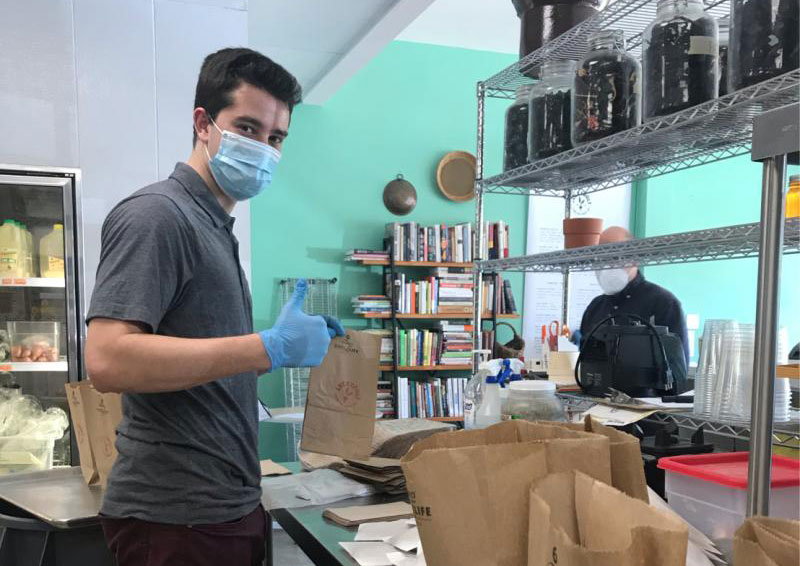For a company promising to bring order to chaotic kitchens, Galley Solutions is having a moment as its cloud-based inventory, ingredient and supply chain tools help foodservice brands work through this unplanned midlife crisis. Whether it’s a single restaurant, corporate caterer, ghost kitchen or franchised chain, helping such businesses track food costs down to a micro level is the raw data many brands need to reevaluate their businesses and viable in a strange new world.
Focused on sexy topics like optimized purchasing, data integration and cloud-based food costing, Galley’s business model isn’t easy to outline, which co-founder Ian Christopher readily admits. In describing the company, he used words like “iterate,” “framework” and “agility” before arriving at a clearer crux of the model, and why it’s suddenly in vogue as so many foodservice brands reexamine their raison d’etre and decide whether they can continue.
Christopher says his own understanding of his business is shifting as the San Diego-based company sees a huge surge in sales from new customers and platform usage during the pandemic.
“Our platform is really future facing in the sense that you can order, create recipes and predict your demand, put in your forecast and sale prices, and get a margin analysis,” Christopher said. “That is essentially answering one of the biggest questions in the industry right now, literally a daily struggle for these folks: what should I be purchasing and what offerings can I make from a somewhat disrupted or limited ingredient or supply chain offering.”
As Subway and Panera start slinging fresh veggies and gallons of milk, esteemed fine-dining restaurants pivot to family-style meals and fast-food giants refocus on drive-thru and curbside operations, it is suddenly mission critical to know your foodservice operation all the way down to the individual tomato.
“The daily struggle for these folks is what should I be purchasing and what offering can I make from a somewhat disrupted or even limited ingredient or supply chain offering,” Christopher said. “These were some of the first questions that we set out to answer by building Galley, and now everyone’s reverting back to these basic principles.”
Galley is an “ecosystem” of tools that goes from recipe R&D through purchasing, production, menu planning, margin analysis, inventory management and production. Christopher says Galley is seeing a huge uptick in contact from catering brands, in particular, as many pause their operations to reevaluate the market and determine whether they can return to some form of business as it once was.
Upstarts and existing restaurants eyeing up the ghost and virtual kitchen sub-categories are also driving the increased calls at Galley, along with commissary kitchen operators and restaurateurs wondering what they can create, package and sell with their existing supply chain or, in some cases, whatever ingredients they have on hand.
“We’re all essentially agreeing to throw away all historical data, because the way a restaurant functioned four weeks ago is not the way a restaurant is going to function in the future,” Christopher said. “This is the stress test that this industry has been waiting for, [and] I don’t believe we will ever go back to the way food was before.”
As the industry shifts on a dime, Galley is reexamining its own value proposition to the industry, including enabling new direct-to-consumer models. Those models can bea farmer looking to sell directly to consumers or single restaurants considering new-age formats, such as a virtual brand or operating out of a ghost kitchen.
The company is currently writing an article for clients on deeper-level menu engineering, including creating menus expressly designed with delivery in mind—which tends to include higher packaging costs, as well as commissions from outside delivery providers.
Christopher said he expects many of these COVID-19-spurred industry trends to stick around behind the crisis, and predicts that some of the largest national restaurant brands could fail as part of a second wave.
As outside brands enter new markets, thanks to the lower startup costs of virtual and ghost kitchens, he expects QSR-style restaurants to also feel the pain, with companies like CloudKitchens and Kitchen United expanding quickly behind the scenes.
Because of that movement, and large-scale disruptions at commissary-style kitchens, like big-city convention centers, Christopher predicted those kinds of locations could become “tier-one” real estate in the next phase of this shakeout. He notes that these types of spaces would be more valuable than shuttered casual restaurants, which would have large dining spaces that need to be repurposed.
“I think there is going to be a lot of auxiliary commercial kitchen space that is not ever going to get back to the capacity that it once was, or will need to be completely reimagined,” he said.
Aside from all the dark stuff that’s unavoidable in the restaurant supply chain world, Christopher remains excited about the future given all the new formats that are being tested in real time. Galley is at the ground-floor-level of helping brands create new identities and business plans, which appears to be a new normal for the time being.
“I get really excited and encouraged by how people have almost put down all of their biz concerns or their leanings toward financial gain or personal gain to really be helpful for each other and to see these digital communities pop up,” he said. “Food innovators and thought leaders are saying I’m open sourced, I’m all yours, and that’s our approach and why I want to have this conversation.”



